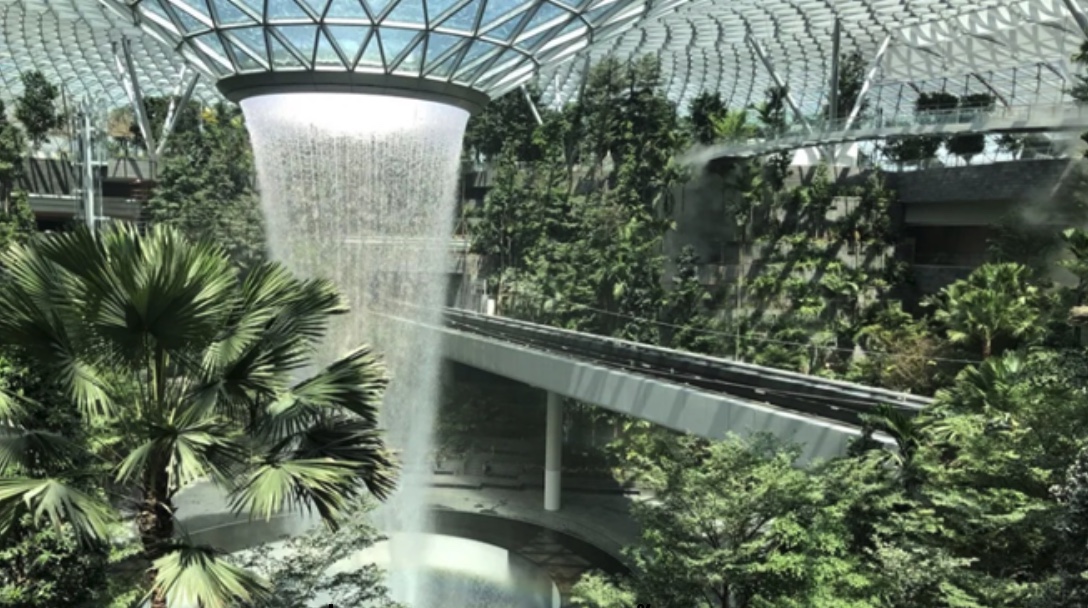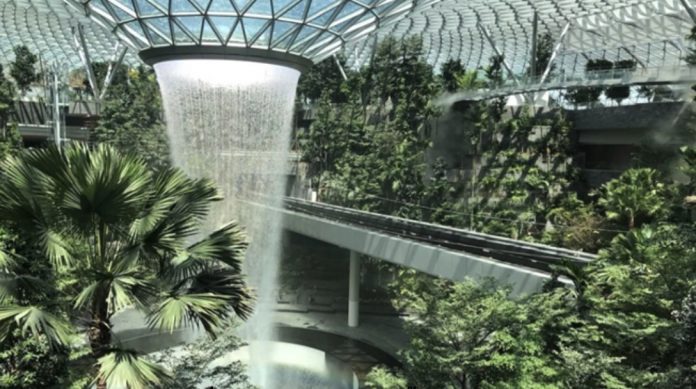สิงคโปร์กำลังเผชิญความท้าทายกับปัญหาการขาดแคลนน้ำ โดยปัจจุบัน สิงคโปร์ใช้น้ำวันละ 430 ล้านแกลลอน และคาดว่าจะเพิ่มเป็นสองเท่าในอีก 40 ปีข้างหน้า ทำให้ประเทศนี้ต้องเร่งพัฒนาเทคโนโลยีเพื่อรับมือกับการขาดแคลนน้ำในอนาคต
ศาสตราจารย์เชน สไนเดอร์ จากมหาวิทยาลัยเทคโนโลยีนันยาง กล่าวว่า สิงคโปร์นำเข้าน้ำ 40% ของการบริโภคทั้งหมด ซึ่งมีความเสี่ยงขาดแคลนน้ำจากสภาพภูมิอากาศที่เปลี่ยนแปลง ภาวะการขาดแคลนน้ำจืดสำหรับการอุปโภคบริโภค สาเหตุเหล่านี้จึงจำเป็นต้องพัฒนาเทคโนโลยีเพื่อพึ่งพาตนเองให้มากขึ้น
โดยนวัตกรรมที่น่าสนใจเพื่อแก้ปัญหานี้ ได้แก่ ฟองน้ำคาร์บอนไฟเบอร์แอโรเจล ที่สามารถดูดซับของเสียได้ถึง 190 เท่าของน้ำหนักตัวเอง และเครื่องกรองน้ำแบบพกพาของบริษัท WateRoam ที่สามารถผลิตน้ำสะอาดให้หมู่บ้านที่มีขนาดจำนวนประชากรกว่า 100 คนได้นานถึง 2 ปี
ต่อมาผู้เชี่ยวชาญมองว่า การพัฒนาเทคโนโลยีเหล่านี้ จะช่วยให้สิงคโปร์ควบคุมการใช้น้ำในอนาคตของตนเองได้ พร้อมทั้งมีศักยภาพในการแก้ปัญหาการขาดแคลนน้ำในระดับโลกอีกด้วย
สะท้อนให้เห็นถึงความพยายามของสิงคโปร์ในการใช้นวัตกรรมและเทคโนโลยีเพื่อแก้ไขปัญหาการขาดแคลนทรัพยากรน้ำที่กำลังทวีความรุนแรงขึ้นทั่วโลก
โดย CNN News
Singapore Utilizes Technology to Address Water Scarcity

Singapore is currently facing significant challenges regarding water scarcity. At present, the city-state consumes 430 million gallons of water daily, with projections indicating this figure could double within the next four decades. Consequently, the nation is accelerating its technological development to prepare for future water shortages.
Professor Shane Snyder from Nanyang Technological University reports that Singapore imports 40% of its total water consumption. This reliance on external sources poses risks due to climate change and the growing scarcity of potable freshwater. These factors underscore the necessity for Singapore to develop technologies that enhance its self-sufficiency in water resources.
Notable innovations addressing this challenge include carbon fiber aerogel sponges, capable of absorbing contaminants up to 190 times their own weight, and portable water filtration devices developed by WateRoam. The latter can produce clean water sufficient for villages with populations of over 100 people for a duration of up to two years.
Experts posit that the development of such technologies will not only enable Singapore to better manage its future water usage but also has the potential to address water scarcity issues on a global scale.
This situation reflects Singapore’s concerted efforts to leverage innovation and technology in mitigating the increasingly severe problem of water resource scarcity, a challenge that is becoming more acute worldwide.
By CNN News

















